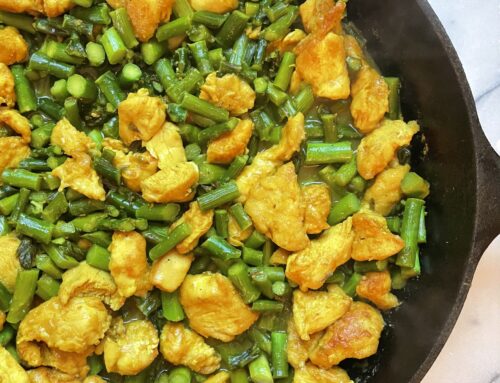 You’ve probably heard the advice to “shop around the edges of the supermarket.” There’s some truth to this. You’ll find fresh produce, meats, eggs and many other whole foods stocked around the perimeter of the market. But this piece of advice has its limitations. If you want good cooking oils, whole grains, dried herbs, spices, beans, nuts and seeds, you usually need to venture into the actual aisles of the supermarket.
You’ve probably heard the advice to “shop around the edges of the supermarket.” There’s some truth to this. You’ll find fresh produce, meats, eggs and many other whole foods stocked around the perimeter of the market. But this piece of advice has its limitations. If you want good cooking oils, whole grains, dried herbs, spices, beans, nuts and seeds, you usually need to venture into the actual aisles of the supermarket.
This is where things get tricky.
Within the aisles of the supermarket, you’ll probably find an “organic” section, but most everything is in a box. There’s a gluten free section, which won’t necessarily have healthier options. And then there are literally hundreds of packaged items with phrases like “natural,” “sugar free” and “whole grain” slapped onto their boxes.
Let’s cut through the confusion. Here’s a field guide to food buzzwords that may be lying to you:
| Cage Free | Yes, hens who lay “cage free” eggs are technically not kept in cages. But no one said that they had to go outside… Many hens who lay “cage free” eggs live their entire lives in crowded barns without access to the outdoors. |
| Farm Fresh | I know you’d like to picture your friendly overall-clad farmer when you see this label, but “farm fresh” is purely a marketing term with no official definition. |
| Free Range | See “cage free” except these hens do have the option to go outside. Usually this means a screened-in porch that the hens may or may not be able to navigate to. |
| Healthy | The FDA is currently in talks about how to define this. Stay tuned. |
| Made with organic ingredients | These products can have up to 30% non-organic ingredients and still utilize this label. |
| Made with real fruit / fruit juice | Add one berry or a splash of fruit juice and you can slap this label onto your box. There is no set standard for how much “real” fruit or fruit juice makes the entire product worthy of this label. |
| Multigrain | All this means is that more than one type of grain is present in the product. Throw in some barley or oat flour with your enriched white wheat flour and this label can fly. Multigrain also does not necessarily mean “whole grain.” |
| Natural and All Natural | The FDA has no official definition for this term, rendering “natural” virtually meaningless. |
| No hormones | Usually you see this on cartons of eggs. Farmers are not allowed to give hormones to chickens. So duh, there are no hormones. There’s no added value here. |
| No sugar added | AKA chemical city. It’s true that no sugars can be used during the processing of a “no sugar added” food. However, the product may very well contain aspartame (Equal), saccharine (Sweet N’ Low), sucralose (Splenda) and other artificial sweeteners. |
| Sugar free | Something can be labeled “sugar free” if it contains less than .5 grams of sugar per serving. Check the serving size on the nutrition label. If the serving size is one cookie and you usually eat three, you’re probably consuming more sugar than you thought. In addition, this label doesn’t cover the artificial sweeteners that can still be packed into a “sugar free” product. |
| Whole Grain | While a product with this label must contain some type of whole grain as a primary ingredient, it does not mean the product does not contain refined flours, sugars or other additives. This is hardly the same as a true whole grain food like brown rice or whole oats. |
This is by no means an exhaustive list. There are many more food marketing terms that are deceptive to say the least. For example, yes that “healthy” and “all natural” granola bar contains the 10 grams of protein they brag about on their box. But look closer and one of the first few ingredients is sugar. Oh, and the serving size is half a bar (even though no one eats half a granola bar at a time). In this case, your granola bar might be the nutritional equivalent to a bowl of ice cream.
The bottom line? Reserve your journey into the inner aisles of the supermarket to purchase simple, one-ingredient goods. Stick to a 100% whole grain oatmeal rather than “oat-O’s” or whatever the processed cereal version is. Whole brown rice, wild rice, dried beans, seeds and nuts are other viable options. Make your own spice mixtures by buying several herbs rather than pre-made mixes that can contain additives.
In short, trust the whole, honest foods our grandmothers cooked with and see through the deceptive marketing on all the rest.
For more clean eating swaps, download our top 10 clean eating swaps on our home page!
With love & gratitude,
Kristina and the EMBODY Team


